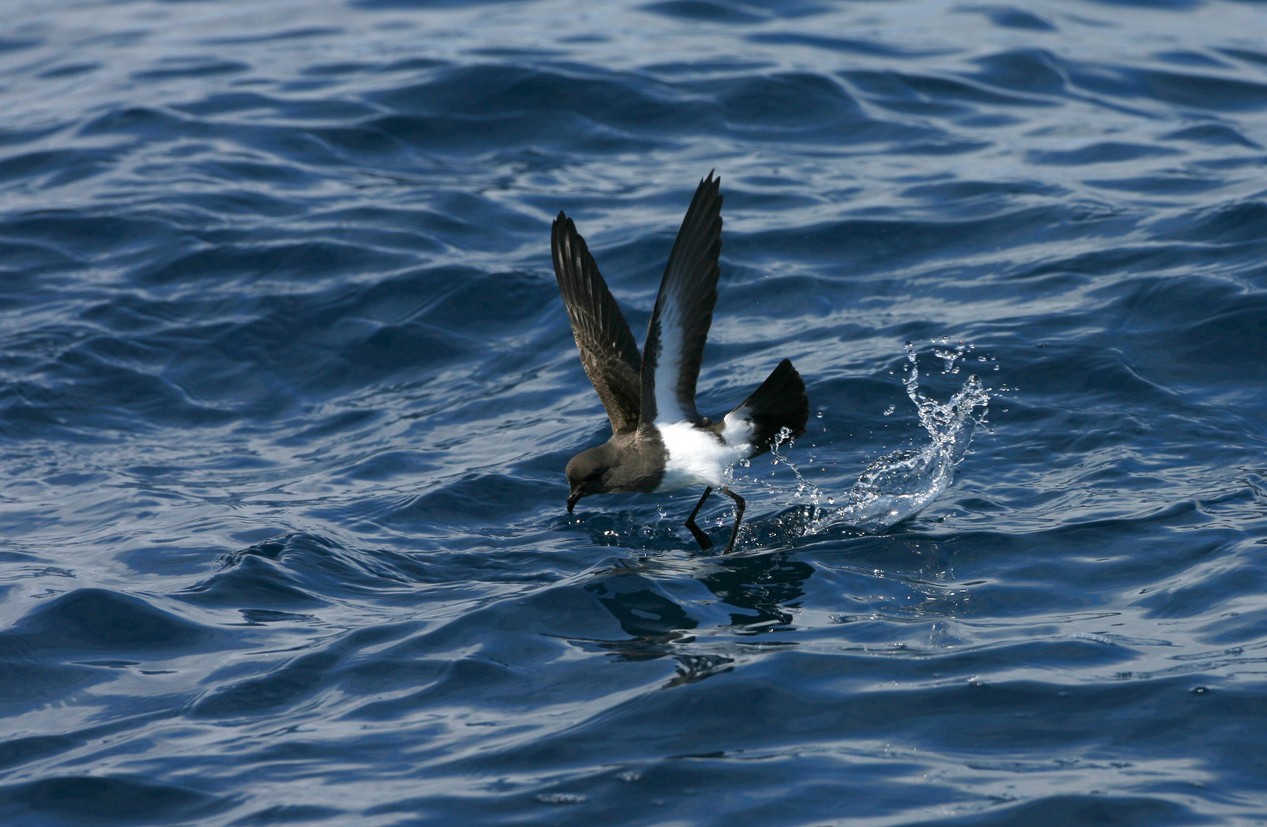White-bellied Storm Petrel
A species of Frigate Storm-petrels Scientific name : Fregetta grallaria Genus : Frigate Storm-petrels
White-bellied Storm Petrel, A species of Frigate Storm-petrels
Botanical name: Fregetta grallaria
Genus: Frigate Storm-petrels
Content
Description General Info

Description
The species is characterised on colour patterns, the condition of the nasal tubes, tail shape, structure of claws, and proportions of the leg bones. Fregetta spp. have their plumage black above, white below, and white upper tail coverts, nasal tube free at end and upturned, half culmen in length; tarsus booted in front, webs black, basal joint middle toe flattened, and claws blunt and flattened. The white-bellied storm petrel is a small bird, around 18 to 20 centimetres (7.1–7.9 in) in length with a wing span of 46–48 cm (18.1–18.9 in), tubenose, with a fine black bill, square tail, and polymorphic patterns of black, grey, and white plumage. As the name suggests, the upper parts are dark and the underparts are light coloured with many variations in plumage observed including a largely dark variant. Its legs are long (grallae being Latin for "stilts") and a distinguishing characteristic is that the toes do not usually project beyond the tail. Plumage variation between sexes and between adults and juveniles has not been observed. 
Size
20 cm
Life Expectancy
30.4 years
Nest Placement
Ground
Feeding Habits
White-bellied Storm Petrel primarily feasts on small crustaceans, squid, and sea skaters, utilizing nocturnal surface-seizing techniques to capture prey. This bird displays a distinctive adaptation for pattering along the water's surface, a behavior not widely seen among seabirds.
Habitat
White-bellied Storm Petrel predominantly inhabits marine environments and is highly pelagic, favoring tropical high-salinity waters. This species is rarely seen close to land, except when visiting breeding colonies located on offshore islands or stacks. Its nesting sites are typically amidst boulder scree or on grassy slopes, sometimes up to elevations of 450 meters above sea level. Their environment spans across broad geographical marine regions rather than being confined to any specific terrestrial area.
Dite type
Carnivorous
General Info
Feeding Habits
Bird food type
Behavior
The white-bellied storm petrel is highly pelagic, rare and not commonly observed. As a result, there is limited knowledge of its behaviour and ecology. Visits to land are uncommon and occur near breeding colonies. It is nocturnal when ashore. Flight tends to be low gliding with pattering and dipping to feed, stepping off the water's surface with their legs, an asymmetrical gait having been observed. It has been known to feed with other seabirds and to follow ships. 
Distribution Area
The white-bellied storm petrel has a widespread range throughout the oceans of the Southern Hemisphere including the Pacific, Atlantic, and Indian Oceans, although little detail is known of its pelagic distribution. It is native in Argentina, Australia, Brazil, Chile, French Polynesia, French Southern Territories, New Zealand, Saint Helena, Ascension, and Tristan da Cunha. It is vagrant in Angola, Antarctica, Maldives, Namibia, South Georgia and the South Sandwich Islands, and Yemen. It is present, with uncertain origin, in American Samoa, Bouvet Island, Congo, Cook Islands, Ecuador, Falkland Islands (Malvinas), Fiji, Gabon, Heard Island and McDonald Islands, Kiribati, Madagascar, Mozambique, New Caledonia, Niue, Norfolk Island, Papua New Guinea, Peru, Pitcairn, Samoa, Solomon Islands, Tokelau, Tonga, Tuvalu, Uruguay, Vanuatu, and Wallis and Futuna. 
Species Status
Significant deficiencies in the data sources that inform these decisions are well-recognised. The IUCN Red List evaluates Fregetta grallaria as being of least concern based on range size, population trend, and population size criteria. In New Zealand, its conservation status is nationally endangered (2013). In Australia, the commonwealth status listing of F. grallaria is vulnerable. Nationally in Australia, the Environmental Protection and Biodiversity Conservation Act statutory listing status is vulnerable and requires a recovery plan (2009). Its nonstatutory listing under the NGO Action Plan for Australian Birds 2010 is vulnerable. In New South Wales, Australia, at the state level, F. grallaria is listed as vulnerable under the Threatened Species Conservation Act 1995. F. g. gallaria (Tasman Sea) is “considered to be vulnerable at the global level”. The Australian breeding population is listed as vulnerable (“small populations at five locations with plausible future threat”) and the population visiting Australian territory as near threatened (“seven locations with plausible future threat”) under the Action Plan for Australian Birds 2010. All existing breeding populations are now important to long-term survival. 


Scientific Classification
Phylum
Chordates Class
Birds Order
Albatrosses and Petrels Family
Hydrobatidae Genus
Frigate Storm-petrels Species
White-bellied Storm Petrel